Space Gardening 101
Space Gardening 101
You can’t escape eating (or gardening!) your vegetables, even if you’re in space. On Aug. 10, astronauts on the International Space Station sampled their first space grown salad. This freshly harvest red romaine lettuce was grown in the “Veggie” plant growth chamber that is designed to make gardens flourish in weightlessness.
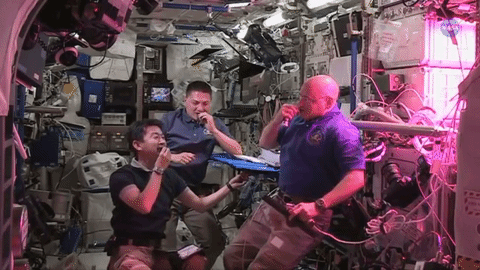
In a weightless environment, there is no up and down, so roots grow in all directions. Water and soil, the materials used to anchor these plants and allow for root growth tend to float away.
How Do We Grow Plants in Space?
1. Plant Pillows
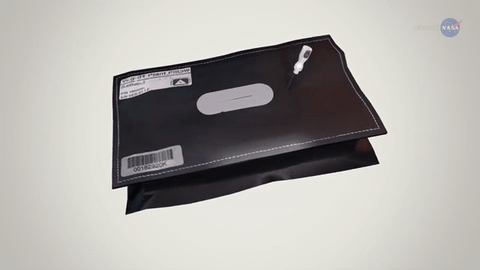
The Veggie chamber helps solve the problems of a weightless environment by using ‘plant pillows’, sounds comfy right? These pillows are bags filled with material for growing plants in space.
2. Wicks

Wicks are implanted into the bags and are used to draw water from inside the pillow to the plant.
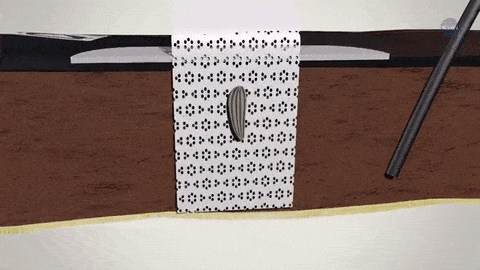
These wicks also provide a place to glue the seeds. It’s important to orient the seeds so roots will grow ‘down’, and shoots that emerge will push out of the bag.
3. LED Lights
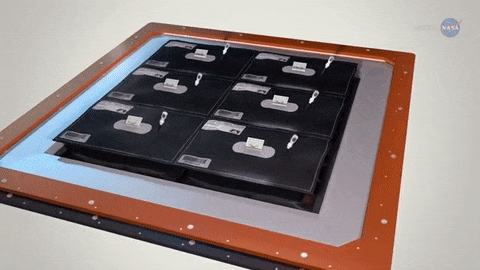
LED lights are used for photosynthesis and give the shoots a sense of direction so they keep growing upward. The walls of the Veggie chamber can expand to make room for the plant as it grows.
The purple/pinkish hue surrounding the plants in Veggie is the result of a combination of the red and blue lights, which is what the plants need to grow. Green LEDS were added so the plants look like edible food rather than weird purple plants.
Why are we growing plants in space?
When astronauts travel on deep space missions, like Mars, they will need to be self-sufficient for long periods of time. Having the ability to grow their own food is a big step in that direction. There is also a desire to grow flowering vegetables in space, which is why we are currently tending to zinnia flowers on orbit. Growing these flowering plants will help us understand longer duration growing plants that have to flower in space, such as tomatoes.
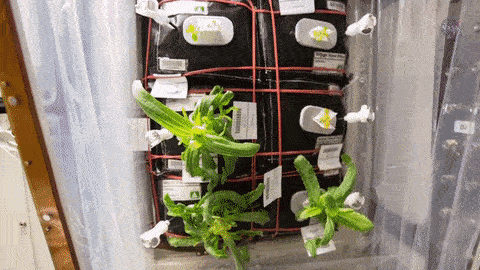
What’s Next? The next SpaceX delivery will include seeds for a small cabbage and additional red romaine lettuce. Upcoming experiments will use various ratios of red and blue lights and different fertilizers in attempts to improve crop yield, nutrition and flavor. The findings from these experiments can be utilized both on Earth and in space.
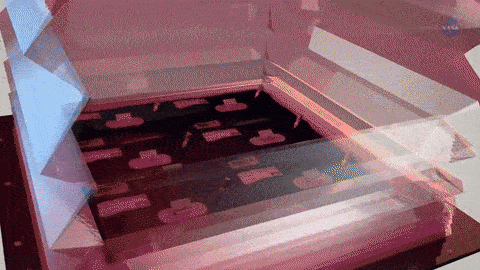
In addition to the nutrition benefits of growing vegetables in space, the psychological benefits are also significant. Having living plants can help with stress and increase the crews’ enjoyment. It provides the sights, smells and tastes of Earth.
To learn more about gardening in space, watch ScienceCast HERE.
Make sure to follow us on Tumblr for your regular dose of space: http://nasa.tumblr.com
More Posts from Nasa and Others
10 Things: Calling All Pluto Lovers
June 22 marks the 40th anniversary of Charon’s discovery—the dwarf planet Pluto’s largest and first known moon. While the definition of a planet is the subject of vigorous scientific debate, this dwarf planet is a fascinating world to explore. Get to know Pluto’s beautiful, fascinating companion this week.
1. A Happy Accident

Astronomers James Christy and Robert Harrington weren’t even looking for satellites of Pluto when they discovered Charon in June 1978 at the U.S. Naval Observatory Flagstaff Station in Arizona – only about six miles from where Pluto was discovered at Lowell Observatory. Instead, they were trying to refine Pluto's orbit around the Sun when sharp-eyed Christy noticed images of Pluto were strangely elongated; a blob seemed to move around Pluto.
The direction of elongation cycled back and forth over 6.39 days―the same as Pluto's rotation period. Searching through their archives of Pluto images taken years before, Christy then found more cases where Pluto appeared elongated. Additional images confirmed he had discovered the first known moon of Pluto.
2. Forever and Always

Christy proposed the name Charon after the mythological ferryman who carried souls across the river Acheron, one of the five mythical rivers that surrounded Pluto's underworld. But Christy also chose it for a more personal reason: The first four letters matched the name of his wife, Charlene. (Cue the collective sigh.)
3. Big Little Moon

Charon—the largest of Pluto’s five moons and approximately the size of Texas—is almost half the size of Pluto itself. The little moon is so big that Pluto and Charon are sometimes referred to as a double dwarf planet system. The distance between them is 12,200 miles (19,640 kilometers).
4. A Colorful and Violent History

Many scientists on the New Horizons mission expected Charon to be a monotonous, crater-battered world; instead, they found a landscape covered with mountains, canyons, landslides, surface-color variations and more. High-resolution images of the Pluto-facing hemisphere of Charon, taken by New Horizons as the spacecraft sped through the Pluto system on July 14 and transmitted to Earth on Sept. 21, reveal details of a belt of fractures and canyons just north of the moon’s equator.
5. Grander Canyon

This great canyon system stretches more than 1,000 miles (1,600 kilometers) across the entire face of Charon and likely around onto Charon’s far side. Four times as long as the Grand Canyon, and twice as deep in places, these faults and canyons indicate a titanic geological upheaval in Charon’s past.
6. Officially Official

In April 2018, the International Astronomical Union—the internationally recognized authority for naming celestial bodies and their surface features—approved a dozen names for Charon’s features proposed by our New Horizons mission team. Many of the names focus on the literature and mythology of exploration.
7. Flying Over Charon
This flyover video of Charon was created thanks to images from our New Horizons spacecraft. The “flight” starts with the informally named Mordor (dark) region near Charon’s north pole. Then the camera moves south to a vast chasm, descending to just 40 miles (60 kilometers) above the surface to fly through the canyon system.
8. Strikingly Different Worlds

This composite of enhanced color images of Pluto (lower right) and Charon (upper left), was taken by New Horizons as it passed through the Pluto system on July 14, 2015. This image highlights the striking differences between Pluto and Charon. The color and brightness of both Pluto and Charon have been processed identically to allow direct comparison of their surface properties, and to highlight the similarity between Charon’s polar red terrain and Pluto’s equatorial red terrain.
9. Quality Facetime

Charon neither rises nor sets, but hovers over the same spot on Pluto's surface, and the same side of Charon always faces Pluto―a phenomenon called mutual tidal locking.
10. Shine On, Charon

Bathed in “Plutoshine,” this image from New Horizons shows the night side of Charon against a star field lit by faint, reflected light from Pluto itself on July 15, 2015.
Read the full version of this week’s ‘10 Things to Know’ article on the web HERE.
Make sure to follow us on Tumblr for your regular dose of space: http://nasa.tumblr.com.
Largest Collection of Planets EVER Discovered!
Guess what!? Our Kepler mission has verified 1,284 new planets, which is the single largest finding of planets to date. This gives us hope that somewhere out there, around a star much like ours, we can possibly one day discover another Earth-like planet.

But what exactly does that mean? These planets were previously seen by our spacecraft, but have now been verified. Kepler’s candidates require verification to determine if they are actual planets, and not another object, such as a small star, mimicking a planet. This announcement more than doubles the number of verified planets from Kepler.

Since the discovery of the first planets outside our solar system more than two decades ago, researchers have resorted to a laborious, one-by-one process of verifying suspected planets. These follow-up observations are often time and resource intensive. This latest announcement, however, is based on a statistical analysis method that can be applied to many planet candidates simultaneously.
They employed a technique to assign each Kepler candidate a planet-hood probability percentage – the first such automated computation on this scale, as previous statistical techniques focused only on sub-groups within the greater list of planet candidates identified by Kepler.
What that means in English: Planet candidates can be thought of like bread crumbs. If you drop a few large crumbs on the floor, you can pick them up one by one. But, if you spill a whole bag of tiny crumbs, you're going to need a broom. This statistical analysis is our broom.

The Basics: Our Kepler space telescope measures the brightness of stars. The data will look like an EKG showing the heart beat. Whenever a planet passes in front of its parent star a viewed from the spacecraft, a tiny pulse or beat is produced. From the repeated beats, we can detect and verify the existence of Earth-size planets and learn about their orbits and sizes. This planet-hunting technique is also known as the Transit Method.

The number of planets by size for all known exoplanets, planets that orbit a sun-like star, can be seen in the above graph. The blue bars represent all previously verified exoplanets by size, while the orange bars represent Kepler’s 1,284 newly validated planets announced on May 10.

While our original Kepler mission has concluded, we have more than 4 years of science collected that produced a remarkable data set that will be used by scientists for decades. The spacecraft itself has been re-purposed for a new mission, called K2 -- an extended version of the original Kepler mission to new parts of the sky and new fields of study.

The above visual shows all the missions we’re currently using, and plan to use, in order to continue searching for signs of life beyond Earth.
Following Kepler, we will be launching future missions to continue planet-hunting , such as the Transiting Exoplanet Survey Satellite (TESS), and the James Webb Space Telescope. We hope to continue searching for other worlds out there and maybe even signs of life-as-we-know-it beyond Earth.
Make sure to follow us on Tumblr for your regular dose of space: http://nasa.tumblr.com
How did COVID19 affect your teamwork leading up to the launch? I hope everyone is staying well and sane:)
I've been very curious about the basis on which the landing site is decided! I read that it will land in the Jerezo crater, so is there a particular reason behind choosing that place for the landing?
5 Signs You Might Be Ready to Apply to be an Astronaut
Did you hear? Astronaut applications are open! Here are a few signs that might mean you’re ready to apply:
1. You Don’t Mind Having Roommates

When you’re an astronaut, you have to work and live with your crew mates for extended periods of time. It’s important to the mission and your safety that everyone can collaborate and work together.
2. You LOVE Space

If the Milky Way, planets and space travel doesn’t excite you then this might not be the perfect job for you. But if you love galaxies, space station research and deep space exploration, then maybe you should take a look at our application.
3. Adventure Doesn’t Scare You

Being an astronaut means that you get to take part in adventures that most people will never experience. Imagine: sitting on the launch pad in the Orion spacecraft, atop a rocket that’s getting ready to launch. You’ll travel farther into space than any other humans have been and help push the boundaries of technology in the proving ground of deep space lunar orbits, leading the way for future missions to Mars.
4. You Want to be on the Cutting Edge of Science

Not only do astronauts get to travel to space, but they also get to conduct really cool research in microgravity. Did you know that right now they’re growing Zinnia flowers on the International Space Station? This research could help with our future deep space exploration and could teach us a few things about growing plants on Earth. Learn more about all the awesome research on the space station HERE.
5. You’re Not Afraid of Heights

One of the coolest things about being an astronaut, is that you get to go to SPACE! At the very least, you’ll travel to the International Space Station, which is 250 miles above Earth. Or, you could be one of the first astronauts to travel to a distant asteroid or even Mars!
Interested in applying to become an astronaut? You’re in luck, applications open Dec. 14! Learn about some common myths about becoming an astronaut HERE.
Apply to be one of our astronauts HERE.
Make sure to follow us on Tumblr for your regular dose of space: http://nasa.tumblr.com
From Earth to the Moon: How Are We Getting There?

More than 45 years since humans last set foot on the lunar surface, we’re going back to the Moon and getting ready for Mars. The Artemis program will send the first woman and next man to walk on the surface of the Moon by 2024, establish sustainable lunar exploration and pave the way for future missions deeper into the solar system.
Getting There

Our powerful new rocket, the Space Launch System (SLS), will send astronauts aboard the Orion spacecraft a quarter million miles from Earth to lunar orbit. The spacecraft is designed to support astronauts traveling hundreds of thousands of miles from home, where getting back to Earth takes days rather hours.
Lunar Outpost

Astronauts will dock Orion at our new lunar outpost that will orbit the Moon called the Gateway. This small spaceship will serve as a temporary home and office for astronauts in orbit between missions to the surface of the Moon. It will provide us and our partners access to the entire surface of the Moon, including places we’ve never been before like the lunar South Pole. Even before our first trip to Mars, astronauts will use the Gateway to train for life far away from Earth, and we will use it to practice moving a spaceship in different orbits in deep space.
Expeditions to the Moon

The crew will board a human landing system docked to the Gateway to take expeditions down to the surface of the Moon. We have proposed using a three-stage landing system, with a transfer vehicle to take crew to low-lunar orbit, a descent element to land safely on the surface, and an ascent element to take them back to the Gateway.
Return to Earth

Astronauts will ultimately return to Earth aboard the Orion spacecraft. Orion will enter the Earth’s atmosphere traveling at 25,000 miles per hour, will slow to 300 mph, then parachutes will deploy to slow the spacecraft to approximately 20 mph before splashing down in the Pacific Ocean.
Red Planet

We will establish sustainable lunar exploration within the next decade, and from there, we will prepare for our next giant leap – sending astronauts to Mars!
Discover more about our plans to go to the Moon and on to Mars: https://www.nasa.gov/moontomars
Make sure to follow us on Tumblr for your regular dose of space: http://nasa.tumblr.com.

It was a dark and stormy flyby...
Our @NASAJuno spacecraft's JunoCam captured images of the chaotic, stormy northern hemisphere of Jupiter during its 24th close pass of the giant planet on Dec. 26, 2019. Using data from the flyby, citizen scientist Kevin M. Gill created this color-enhanced image. At the time, the spacecraft was about 14,600 miles (23,500 kilometers) from the tops of Jupiter’s clouds, at a latitude of about 69 degrees north.
Image Credit: Image data: NASA/JPL-Caltech/SwRI/MSSS
Image processing by Kevin M. Gill, © CC BY
Make sure to follow us on Tumblr for your regular dose of space: http://nasa.tumblr.com
❤️🧡💛 Color the Cosmos 💚💙💜
📣 Attention, space explorers! Our Nancy Grace Roman Space Telescope presents: two new coloring pages! Unleash your creativity to bring these celestial scenes to life.

Nancy Grace Roman, NASA’s first chief astronomer, smiles out at us from our first coloring page. She’s considered the mother of our Hubble Space Telescope because she helped everyone understand why it was important to have observatories in space – not just on the ground. If it weren’t for her, Hubble may have never become a reality.
The Roman Space Telescope is named after her to honor the legacy she left behind when she died in 2018. Thanks to Nancy Grace Roman, we’ve taken countless pictures of space from orbiting telescopes and learned so much more about the universe than we could have possibly known otherwise!

The second coloring page illustrates some of the exciting science topics the Roman Space Telescope will explore. Set to launch in the mid-2020s, the mission will view the universe in infrared light, which is like using heat vision. We’ll be able to peer through clouds of dust and see things that are much farther away.
We anticipate all kinds of discoveries from the edge of our solar system to the farthest reaches of space. This coloring page highlights a few of the things the Roman Space Telescope will help us learn more about. The mission will find thousands of planets beyond our solar system and hundreds of millions of galaxies. It will also help us unravel the mysteries of dark matter and dark energy, represented by the gray web-like pattern in the background. With so much exciting new data, who knows what else we may learn?
Download the coloring pages here!
Learn more about the Roman Space Telescope at: https://roman.gsfc.nasa.gov/
Make sure to follow us on Tumblr for your regular dose of space: http://nasa.tumblr.com
Congratulations to the Winner of the Name the Artemis Moonikin Challenge!

Congratulations to Campos! After a very close competition among eight different names, the people have decided: Commander Moonikin Campos is launching on Artemis I, our first uncrewed flight test of the Space Launch System rocket and Orion spacecraft around the Moon later this year.

The name Campos is a dedication to Arturo Campos, electrical power subsystem manager for the Apollo 13 lunar module. He is remembered as not only a key player instrumental to the Apollo 13 crew’s safe return home, but as a champion for equality in the workplace. The final bracket challenge was between Campos and Delos, a reference to the island where Apollo and Artemis were born, according to Greek mythology.

The Moonikin is a male-bodied manikin previously used in Orion vibration tests. Campos will occupy the commander’s seat inside and wear a first-generation Orion Crew Survival System — a spacesuit Artemis astronauts will wear during launch, entry, and other dynamic phases of their missions. Campos' seat will be outfitted with sensors under the headrest and behind the seat to record acceleration and vibration data throughout the mission. Data from the Moonikin’s experience will inform us how to protect astronauts during Artemis II, the first mission around the Moon with crew in more than 50 years.

The Moonikin is one of three passengers flying in place of crew aboard Orion on the mission to test the systems that will take astronauts to the Moon for the next generation of exploration. Two female-bodied model human torsos, called phantoms, will also be aboard Orion. Zohar and Helga, the phantoms named by the Israel Space Agency and the German Aerospace Center respectively, will support an investigation called the Matroshka AstroRad Radiation Experiment to provide data on radiation levels during lunar missions.

Campos, Zohar, and Helga are really excited to begin the journey around the Moon and back. The Artemis I mission will be one of the first steps to establishing a long-term presence on and around the Moon under Artemis, and will help us prepare for humanity's next giant leap — sending the first astronauts to Mars.
Be sure to follow Campos, Zohar, and Helga on their journey by following @NASAArtemis on Facebook, Twitter, and Instagram. Make sure to follow us on Tumblr for your regular dose of space!
An Exo-What...?

Simply put, an exoplanet is a planet that orbits another star. That said, just because a planet orbits a star (like Earth) does not mean that it is automatically stable for life. The planet must be within the habitable zone, which is the area around a star in which water has the potential to be liquid…aka not so close that all the water would evaporate, and not too far away where all the water would freeze.
Recently, with the help of our Kepler spacecraft, scientists have discovered the most Earth-like exoplanet ever, Kepler-452b. Pretty cool! This chart shows 12 other exoplanet discoveries that are less than twice the size of Earth, and live in the habitable zone of their host star. Kepler-452b is special because all previous findings have orbited stars that are smaller and cooler than Earth’s.

You may be thinking, “Okay, so what? There’s an Earth-like planet that spins around a similar sized sun.” Well, Kepler-452b orbits its sun at nearly the same distance from its star as Earth does from our sun, which means that conditions on the plant could be similar to those here on Earth!

We can already guess your next question…”When are we going to Kepler-452b?!” Well, this planet is located in the constellation Cygnus which is 1,400 light-years away, so not anytime soon. However, our Kepler spacecraft continues to search for Earth-like exoplanets and gather important scientific information about them.
-
 umbradactyl liked this · 1 year ago
umbradactyl liked this · 1 year ago -
 snailswithwings liked this · 1 year ago
snailswithwings liked this · 1 year ago -
 lilc00 liked this · 4 years ago
lilc00 liked this · 4 years ago -
 im-nike-1111 reblogged this · 4 years ago
im-nike-1111 reblogged this · 4 years ago -
 longago-once-3 liked this · 4 years ago
longago-once-3 liked this · 4 years ago -
 dubiousspectrum reblogged this · 4 years ago
dubiousspectrum reblogged this · 4 years ago -
 sothatidostuff reblogged this · 4 years ago
sothatidostuff reblogged this · 4 years ago -
 thethoughtsofcoke liked this · 5 years ago
thethoughtsofcoke liked this · 5 years ago -
 we-are-merelyplayers liked this · 5 years ago
we-are-merelyplayers liked this · 5 years ago -
 your-suppressed-memories liked this · 5 years ago
your-suppressed-memories liked this · 5 years ago -
 snowpea-rl liked this · 5 years ago
snowpea-rl liked this · 5 years ago -
 astrowrought reblogged this · 5 years ago
astrowrought reblogged this · 5 years ago -
 thefuturespaceman liked this · 5 years ago
thefuturespaceman liked this · 5 years ago -
 amichalap liked this · 5 years ago
amichalap liked this · 5 years ago -
 dataprincess reblogged this · 6 years ago
dataprincess reblogged this · 6 years ago -
 glxtter--prince liked this · 6 years ago
glxtter--prince liked this · 6 years ago -
 astro-biologist liked this · 6 years ago
astro-biologist liked this · 6 years ago -
 bribzeydragon liked this · 6 years ago
bribzeydragon liked this · 6 years ago -
 alittlebitofearth reblogged this · 7 years ago
alittlebitofearth reblogged this · 7 years ago -
 mellifluousangel liked this · 7 years ago
mellifluousangel liked this · 7 years ago -
 darlugal liked this · 7 years ago
darlugal liked this · 7 years ago -
 revyourharleyquinn liked this · 7 years ago
revyourharleyquinn liked this · 7 years ago -
 ledsmaster-blog liked this · 7 years ago
ledsmaster-blog liked this · 7 years ago -
 sammylunar liked this · 7 years ago
sammylunar liked this · 7 years ago -
 screambirdscreaming liked this · 7 years ago
screambirdscreaming liked this · 7 years ago -
 ookaookaooka liked this · 7 years ago
ookaookaooka liked this · 7 years ago -
 john349-blog liked this · 7 years ago
john349-blog liked this · 7 years ago -
 rose---child liked this · 7 years ago
rose---child liked this · 7 years ago -
 deepest-dope liked this · 7 years ago
deepest-dope liked this · 7 years ago -
 starscape-vi0 reblogged this · 7 years ago
starscape-vi0 reblogged this · 7 years ago -
 starsinmysky-buticantseethe-blog liked this · 7 years ago
starsinmysky-buticantseethe-blog liked this · 7 years ago -
 martiandaydreams reblogged this · 7 years ago
martiandaydreams reblogged this · 7 years ago -
 themidnighttemplars liked this · 7 years ago
themidnighttemplars liked this · 7 years ago
Explore the universe and discover our home planet with the official NASA Tumblr account
1K posts